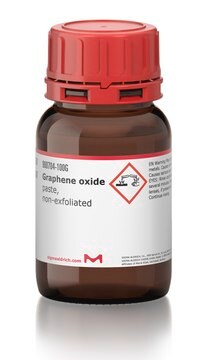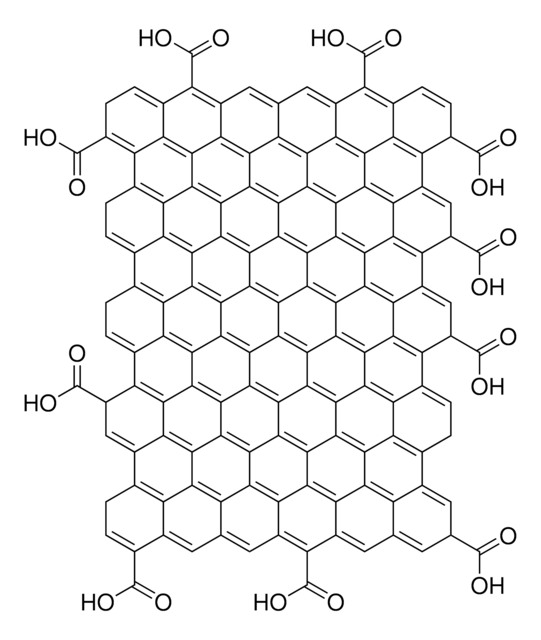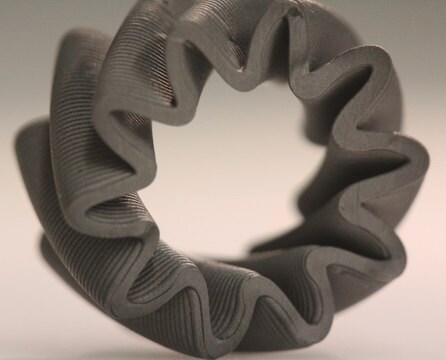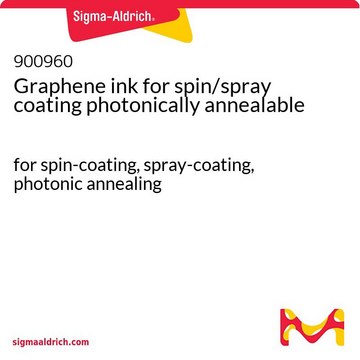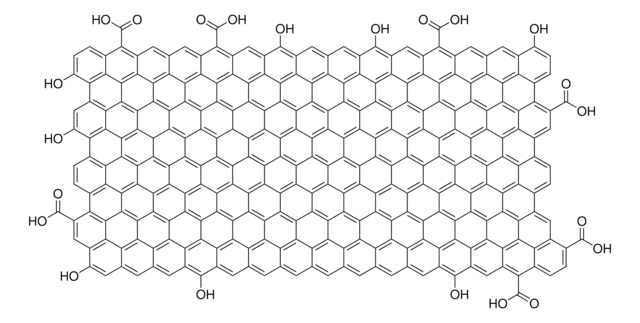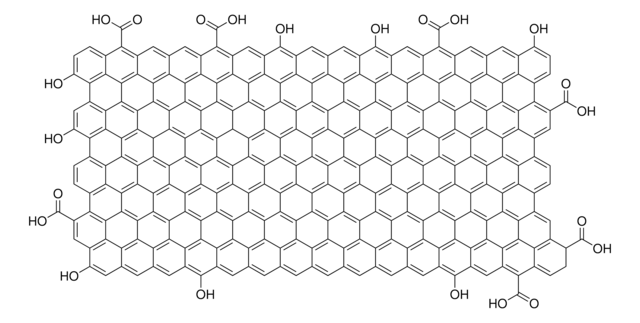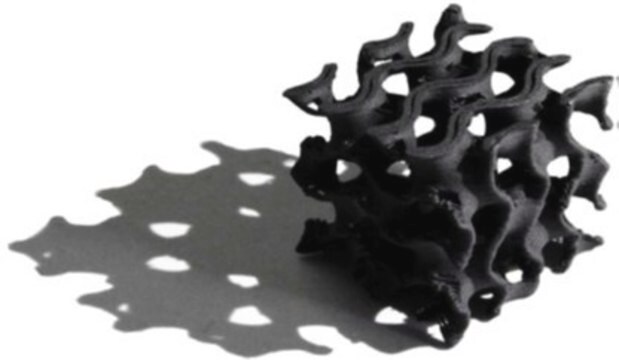916579
3D Printable Graphene Oxide Ink
avg. no. of layers, 1
Sinônimo(s):
3D Printing graphene oxide ink, Direct extrusion printable graphene oxide ink
About This Item
Produtos recomendados
descrição
Graphene oxide sheet size: 300-800 nm lateral size
Number of layer for graphene oxide: single layer
Nível de qualidade
Formulário
liquid
Características
avg. no. of layers 1
características do produto alternativo mais ecológico
Design for Energy Efficiency
Learn more about the Principles of Green Chemistry.
sustainability
Greener Alternative Product
concentração
40 mg/mL (Graphene oxide aquous ink)
viscosidade
100-210 Pa.s (25 °C at shear rate of 10 s-1)
categoria alternativa mais ecológica
, Enabling
temperatura de armazenamento
2-8°C
Categorias relacionadas
Descrição geral
Aplicação
Nota de preparo
Bring the ink to room temeprature, best to mix the ink in a planetary mixer before usage.
Printing:
Recommended 3D printing nozzle diameter size is 400 micron.
Post printing:
After 3D printing, this ink can be directly freeze-dried in liquid nitrogen and vacuum to obtain free- standing graphene oxide aerogel.
This ink can also be processed by adding gelling agents to enable a covalent bond established between the graphene oxide sheets. Gelation agents such as ammonium carbonate, ammonium hydroxide, resorcinol formaldehyde have all been reported to be sufficient. After gelation, the wet GO gels printed parts are washed in acetone to remove water from the pores. Supercritical CO2 can then be used to dry the GO gels.
Curing:
Parts that are printed with gelling agent can be cured in sealed glass vials at 85 °C.
The dried aerogels are generally reduced to graphene aerogels by thermal treatment at 1050 °C under inert atmosphere. Other chemical reduction methods include hydrazine reduction, dried aerogels can also be reduced using hydroiodic acid, followed by washing in ethanol, water and then freeze drying.
Armazenamento e estabilidade
Código de classe de armazenamento
10 - Combustible liquids
Classe de risco de água (WGK)
WGK 3
Ponto de fulgor (°F)
Not applicable
Ponto de fulgor (°C)
Not applicable
Escolha uma das versões mais recentes:
Certificados de análise (COA)
Não está vendo a versão correta?
Se precisar de uma versão específica, você pode procurar um certificado específico pelo número do lote ou da remessa.
Já possui este produto?
Encontre a documentação dos produtos que você adquiriu recentemente na biblioteca de documentos.
Nossa equipe de cientistas tem experiência em todas as áreas de pesquisa, incluindo Life Sciences, ciência de materiais, síntese química, cromatografia, química analítica e muitas outras.
Entre em contato com a assistência técnica